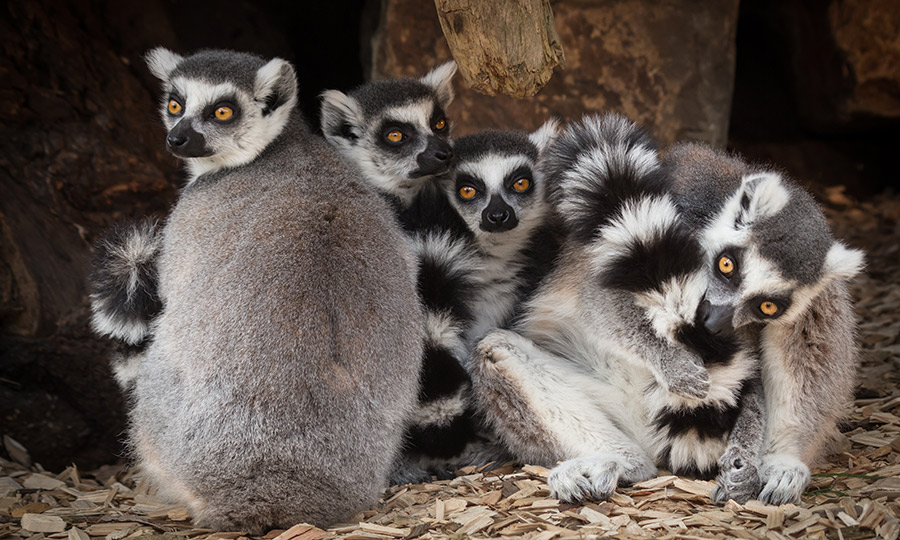Size matters:The link between social groups and human evolution
Humans are social creatures; we live in family groups, socialise with friends, and work with colleagues. Evolutionary psychologist Robin Dunbar’s ‘social brain hypothesis’ suggests that brain size is directly related to social group size in mammals. The bigger the group, the bigger the brain. In this interview with Research Outreach, we find out how Dunbar developed his theory as well as his now famous ‘Dunbar’s number’.
How many friends do you really have? Evolutionary psychologist Professor Robin Dunbar says it won’t be more than 150. Proposed in the 1990s, ‘Dunbar’s number’ puts a limit on the number of stable relationships humans can maintain at any given time. In the internet age this number might seem on the small side, but Dunbar’s theory is tried and tested. We caught up with him to learn how his education moved from philosophy to psychology and how his research moved from primates to people, as well as why size matters when it comes to social groups and evolution.
How did you become interested in evolutionary psychology and subsequently specialise in your field?
I actually went to university to study philosophy but at Oxford University you can’t do philosophy on its own; the least bad option to me was what was then a new degree, philosophy and psychology. You needed a brain the size of a planet to do philosophy with any hope of success, but psychology introduced me to the sciences in a way which was meaningful. First-year psychology was taught by Nikolaas Tinbergen and was really zoology and behaviour. I was introduced to something completely different and out of my field of knowledge altogether: animal behaviour and ecology. It resulted in me doing a couple of university expeditions to study animals in Africa and then doing a PhD on primate behaviour. Via psychology, I was seduced into the sciences. Something I did gain from my philosophy studies was the ability to ignore other people’s disciplinary boundaries though; if it’s interesting, do it, even if it means transgressing.

The first half of my career was spent studying primates and ungulates (large mammals with hooves) in Africa and here in Britain. Then in the late 1980s, early 1990s there were few academic jobs and no research money to do such fieldwork. I figured I’d do what we did on monkeys on humans in the wild (in the park!). These observational studies pulled my focus onto humans, and that’s when I came up with the evidence for the social brain hypothesis. I had been interested in solving another, much more trivial problem (why primates spend so much time grooming). The general consensus at the time was that it was purely hygienic but many years of studying monkeys in the wild made it clear this was more than that. It had dawned on me that time spent grooming by primates is correlated with group size and group size is correlated with brain size. This led to the social brain hypothesis and the prediction of Dunbar’s number!
Could you briefly tell me about your research into human emotion?
I’m interested in social evolution primarily, and that pushes you towards looking at group level phenomena. Groups don’t come out of nowhere and they are extremely difficult to engineer; they are the consequence of relationships animals have with each other and those relationships are also extremely difficult to maintain (as we know ourselves). The cohesion and stability of groups through time depends on how we manage these relationships.
Groups don’t come out of nowhere and they are extremely difficult to engineer.I became interested in romantic relationships during the 1990s. I noticed that magazines were packed full of personal ads. We analysed these as a way of looking at people’s mating strategies, which was then a topic of major interest in behavioural ecology. Normally, mate choice strategy studies were being done on animals (do birds with longer or more spectacular tails attract more mates?), but very little was being done on humans.

Later, I got into Icelandic Viking family sagas. There is so much detail in the sagas that you can mine as perfectly good data on human behaviour. Even if they’re not entirely true (although many of the events they describe can be cross-validated against archaeological and historical data), it gives you insights into how people think, what motivates them, how they engage with the world.
Could you explain Dunbar’s number and why the concept has remained relevant for so long?
Dunbar’s number is simply the limit on the number of meaningful relationships that you can have at any one time. It’s always about 150, although there is some individual variation. Part of that is due to personality and some of it is due to sex but in rather complicated ways. Extroverts have a bigger Dunbar’s number than introverts, for example. Circumstances dramatically affect it too; migrants tend to end up with very small social networks until they’ve embedded, which is why you get ghettos rising with migrants primarily.

This all came out of trying, as I mentioned earlier, to understand why primates spend so much of their time grooming each other. It had just been proposed that the reason primates have such big brains is because they live in very large, complicated social groups, and grooming was part of the bonding mechanism. I had the idea of testing the social brain hypothesis by seeing how brain size correlated with group size in primates, as it should if the hypothesis really was true. It turned out that they were strongly correlated.
Some people will have 1,000 people on their Facebook page, but all they’re doing is including the layers outside the 150 that all of us have.This made me wonder what the relationship for primates would predict for humans. So I plugged human brain size into the regression equation for primates, and it came up with the number 150. I then spent many weeks trawling through ethnographic journals and books, looking for data on hunter-gatherer group sizes, and sure enough, there it was. It turned out to be equivalent to the clan, a rather shadowy group halfway between the more visible groupings of the band (the camp group) and the tribe – shadowy in the sense you can see it physically in space, even though it exists in people’s minds. Hunter-gatherers have social networks that are very similar to our own, that form a series of larger and increasingly inclusive layers.

When we later collected data on people’s personal social networks, we’d ask them to write down all the people they had meaningful relationships with and how they felt about each person. We asked them, how do you feel about this person emotionally? How often do you see them? It became obvious that social networks are not homogeneous; they’re highly structured. It took us a very long time to show this statistically; we had to use cluster analysis which wasn’t widely available. But what it showed was that Dunbar’s number is actually a fractal series of numbers created by sub-structuring the 150 into smaller and smaller subgroups with very specific sizes (5, 15, 50 and 150 people) that differed in emotional closeness and frequency of contact. And this series continued out beyond the 150 to layers at 500 (acquaintances) and 1,500 (faces you can put names to). Now some of datasets available are gigantic. The biggest sample is 61 million Facebook pages: the average number of friends on those 61 million is exactly 149!
When theorising about Dunbar’s number today, do you approach it differently to when you discovered it in the 1990s?
The interesting question was whether the theory would hold up in the online environment. In the past you could only talk to so many people at once because you’d have to travel to have a chat with them; that’s a communication constraint (rather than a cognitive constraint). If you remove the communication constraint, which is essentially what you’re doing on social media, does that allow you to have a bigger network? The answer is no; you see exactly the same layers with the same numbers. Some people will have 1,000 people on their Facebook page, but all they’re doing is including the layers outside the 150 that we all have. That structure is what’s been referred to as the ‘Dunbar graph’. You are just including the acquaintances and voyeurs in your social life.
Is there anything that you would like to apply Dunbar’s number to?
There are all sorts of applications that have come out of it. I’m told the tax collecting arm of the Swedish government treasury was reorganised so that each tax officer dealt with just 150 clients and so had personal knowledge of them all. A lot of big management consultants operate with Dunbar’s number as core to what they do as well.
I would like to see it applied to the NHS and schools. I think it could help them both greatly. In their desperate efforts to cope with increasing numbers of patients, GPs in the UK now operate a system where you go to whichever doctor is free rather than the one who knows you. Therefore, they spend the first 10 minutes of the 15-minute appointment desperately trying to read your notes on the computer, rather than knowing your history and what they’ve been treating you for, in some cases since the day you were born. It has been claimed that one-quarter to one-third of all GP appointments are social, not medical. The patient just wants somebody to talk to because they live alone. If you could solve that loneliness problem, you’d solve the NHS’s financial problems overnight because having friends is the single best predictor of mental and physical health and wellbeing.

Professor Robin Dunbar reminds us of the fundamental limits, and indeed the enduring power, of meaningful human connection. His journey from philosophy to psychology, and from primates to people, highlights how interdisciplinary research can reveal fundamental truths about our social lives. Ultimately, Dunbar challenge us to think critically about the size and structure of our social networks and why, when it comes to human connection in all facets of life, quality often outweighs quantity.
Interview conducted by Todd Beanlands Todd@researchoutreach.org